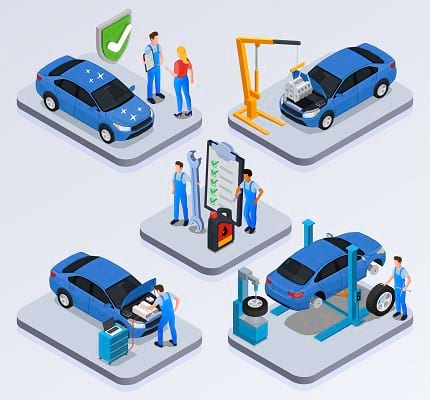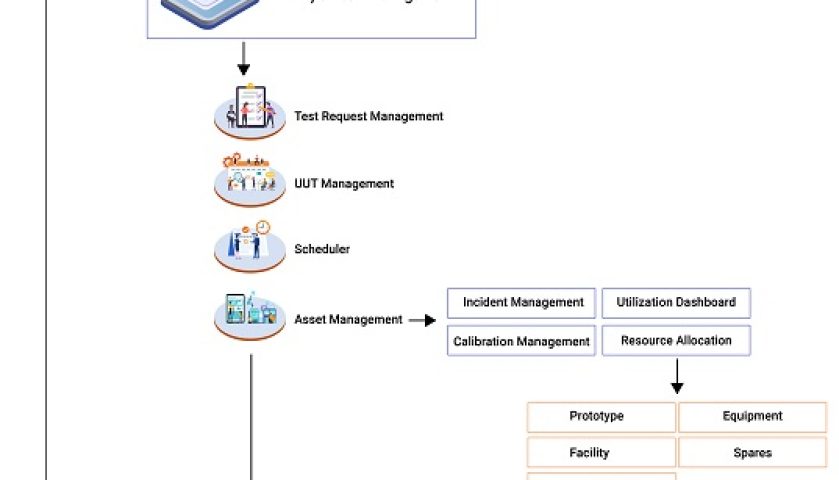Lab Management Software as the Key to Efficient Vehicle Testing
The automotive sector is continuously evolving due to technological advancements and rising consumer demand for safer, eco-friendly vehicles. Within this dynamic environment, vehicle testing holds significant importance in guaranteeing that cars adhere to stringent safety and performance criteria. This puts a massive strain on testing labs, which are the backbone of ensuring vehicle quality and performance. Lab management and asset management is an essential part of the Vehicle testing process.
This is where the lab management software comes into picture. Traditionally, automotive testing labs -prone, and inefficient. It can lead to delays in product development, missed deadlines, and increased costs. They have relied on manual processes for scheduling tests, managing data, and generating reports.
Let’s discuss how laboratory management software plays a key role in vehicle testing and helps to solve the problems
Challenges in Test Lab Management for Vehicle Testing
Traditional testing methodologies in vehicle test labs pose several challenges that affect development speed and inflate costs. Firstly, many test labs rely heavily on manual testing, a time-consuming and error-prone process.
Secondly, efficiently allocating resources like equipment, personnel, and materials proves difficult. Labs constantly struggle to balance project needs with limited availability.
Testing products can be expensive for manufacturers. The lack of transparency in testing procedures and cost breakdowns makes it difficult to predict the exact cost upfront. .
Finally, adhering to industry regulations and careful documenting test results, although essential, can be a time-consuming endeavor. These limitations within traditional testing methodologies significantly impact development efficiency and cost management in vehicle testing lab.

How Lab Management Software Streamlines Vehicle Testing
To achieve efficient testing and maximize resource utilization, a multi-layered approach is key.
Software which streamlines scheduling, allocation, and tracking of resources. Standardized procedures ensure consistent and compliant testing.
With our vast experience in testing and validation over many years, we’ve created the Brix platform. It’s a modern web-based system designed carefully to maintain the integrity and traceability of processes. Brix Lab is a part of Brix platform which is a digital platform for overall product test lifecycle management.
1. Test Request Management:
The test request module facilitates the generation of test requests for Units Under Test (UUTs) within facilities. The library manages facility information and related relationships, enabling the maintenance of facility capabilities.
When you’re creating a test request, the system can show you the available options for facilities that match what you need. It does this by looking at the abilities stored in its database and suggesting the ones that fit your requirements. So, you’ll see only the relevant choices based on what the system knows it can do. Ensure that you choose the right facility for the testing process.
2.Scheduler:
The scheduler module streamlines facility and resource planning by offering customizable views and notifications for upcoming calibrations. Users can efficiently allocate resources, monitor test progress, and adjust schedules seamlessly. The system also prevents overlaps, centralizes resource information, and communicates scheduled maintenance events.
3.Asset Management:
Asset Management is a comprehensive tool for tracking equipment details, enabling users to manage maintenance, calibration, and breakdowns separately. It includes the creation and modification of test labs, equipment, and related information.
The system helps keep track of spare parts by making lists of them. It creates QR codes for easy identification. Use of Capability matrices help directly to identify the resources required for various tasks.
The system actively plans ahead for maintenance and calibration work that it will soon need. It keeps track of any changes made during maintenance and calibration and sends reminders about them. Overall, it makes managing assets easier and more efficient.
4.Issue Management:
Issue Tracking: To report and manage test issues related to equipment, software, and utilities.
Notification Systems: To alert responsible personnel about reported issues.
5.Utilization and Dashboard:
The Utilization module offers a integrated dashboard displaying efficiency and utilization metrics for Test Labs, including running, maintenance, breakdown, preparation, and idle hours. This streamlined presentation enables stakeholders to identify areas for improvement and optimize resource allocation. With user-friendly analytics, it facilitates informed decision-making to enhance operational performance and productivity in testing environments. It employs pie charts and bar charts for visual representation .
This automated system efficiently calculates performance metrics through IoT integration and offers seamless Excel export functionalities. It monitors test facility operations and provides a dedicated section for importing customer-specific manpower data.
With a focus on efficiency and reliability, it ensures optimal performance and resource utilization. The module’s intuitive interface simplifies data collection and analysis, empowering users to make informed decisions. By combining technology and customization, it drives operational excellence and facilitates sustainable growth for businesses.
6.Security and Authentication:
The User Authentication System ensures secure access to the system.

Benefits of BRIX Lab Management Solution
Conclusion
Efficiency and clarity in testing lab workflows are vital in the automotive industry, particularly for Research and Development (R&D) and production. Automating testing procedures, using advanced data management systems, optimizing resource allocation, and ensuring compatibility and documentation standards are essential steps. These measures help organizations speed up product development cycles, cut down expenses, and maintain traceability.
BRIX Platform developed by iASYS is a reliable and comprehensive to establishing laboratory efficiency and process control. With our team’s specialized expertise and decades of experience in the automotive sector, we offer solutions tailored to meet the demanding requirements of the industry. Brix platform empowers validation and facilitates informed decision-making through the utilization of advanced algorithms and statistical techniques.
Get in touch to learn more about BRIX LAB



